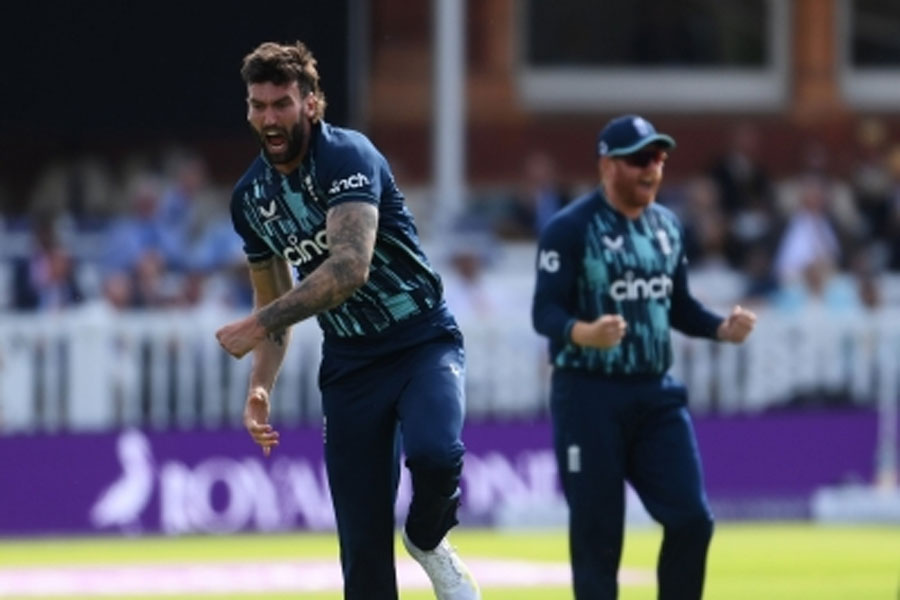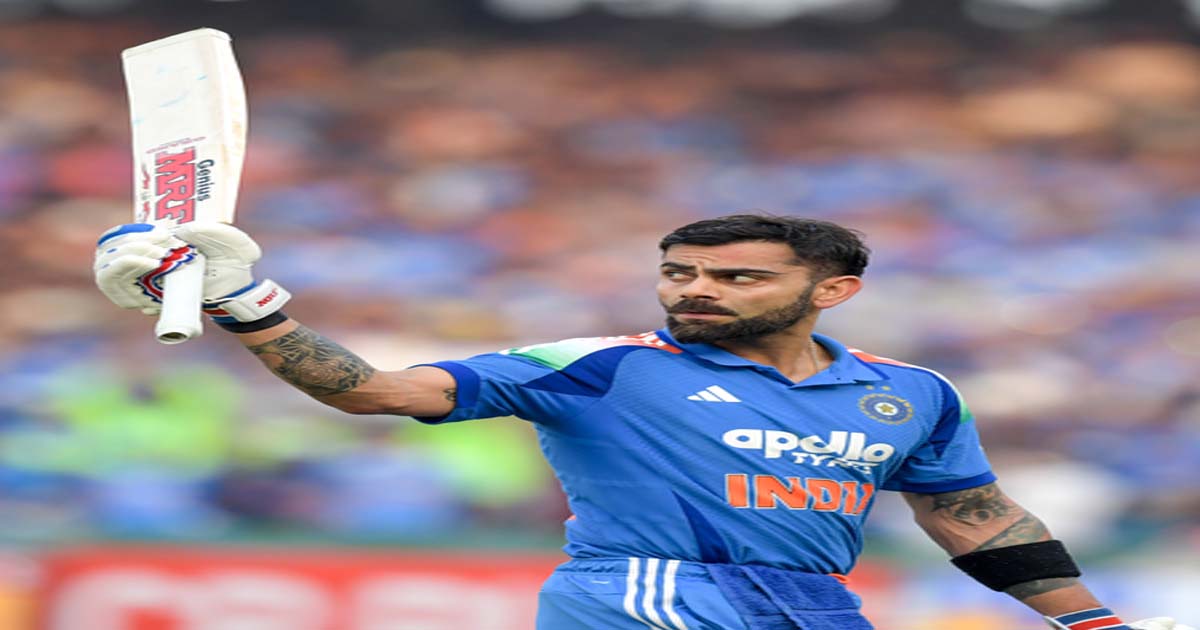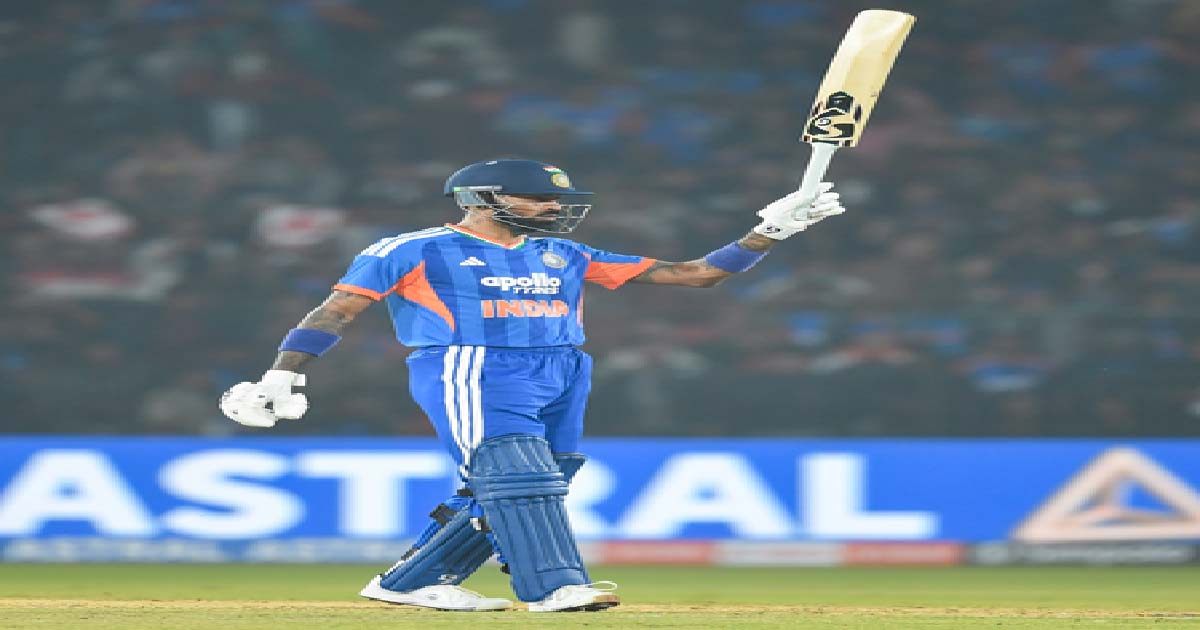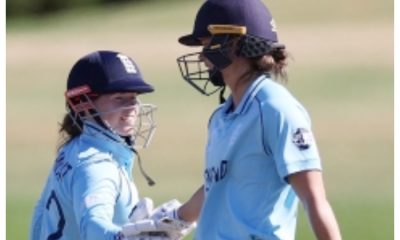Sports
Hussain believes Topley justified importance in England’s white-ball side after 6-24

On the third anniversary of England winning the 2019 Men’s Cricket World Cup at Lord’s, tall left-arm quick Reece Topley left a lasting impression in the second ODI against India at the home of cricket.
In defence of 246, Topley made use of seam movement, variable bounce and varied his pace to pick up 6-24, the best-ever figures by any England bowler in ODI history as India crashed to 146 all out in 38.5 overs, giving the hosts a 100-run victory.
Topley’s career-best efforts meant that England levelled the three-match series 1-1 and set the stage for a winner-takes-it-all affair at Manchester on Sunday.
Now, former England captain Nasser Hussain believes Topley justified his importance and the value he brings to England in white-ball cricket after enduring a rough run with four stress fractures to his back in five years.
“It’s an outstanding story, the way he’s gone through the ups and downs, the stress fractures. He’s bowled well in white-ball cricket of late and as well in that T20 game at Trent Bridge when everyone else was going around the park.
“It’s his place now and when you get figures like that, with so many big games coming up and England are looking for bowlers with a long list of injuries…if some bowler can stand up and continue to put in performance after performance then you’re almost saying ‘you can’t leave me out’,” said Hussain on Sky Sports after the match.
Topley was well-supported by fellow left-arm pacer David Willey, who bowled a miserly spell of 1-27 from nine overs with two maidens and the big scalp of Virat Kohli. Hussain felt the different bowling styles of Willey and Topley proved to be a testing combination for India, who couldn’t do much after being 31-4 in 11.2 overs.
“He’s (Topley) quick enough, he’s tall, he gets bounce, he’s accurate and he’s got a good left-arm companion at the other end in David Willey, so they’re a good combination. David Willey pitches it up and swings it, and Reece Topley comes in and hits the deck. You can see at the death, he’s got the variations and the balls out the back of the hand.”
Hussain signed off by pointing out that Topley used his six feet, seven inches height to good effect at Lord’s. “He’s very smart, he’s a good T20 cricketer as well, so he’s got it with the new ball and the old ball – but on a pitch like this, where they were slightly two-paced, his biggest assets are his height and hitting the deck hard.”
Sports
Virat Kohli completes 16,000 List A runs on Vijay Hazare Trophy return

Bengaluru, Dec 24: Virat Kohli has once again etched his name in cricketing history, reaching the remarkable milestone of 16,000 List A runs during his return to the Vijay Hazare Trophy on Wednesday.
Playing for Delhi in their clash against Andhra Pradesh here at the BCCI’s Centre of Excellence, Kohli achieved the feat with his first run in the team’s chase of 299. This landmark moment further cements his status as one of the greatest ever in the 50-over format.
Kohli’s 16,000-run feat makes him only the second Indian player, after legendary batter Sachin Tendulkar, to reach this figure in List A cricket. The 37-year-old now stands as the ninth player overall to breach this milestone, joining the ranks of cricketing legends like Tendulkar, Ricky Ponting, Kumar Sangakkara, Sir Vivian Richards, and others.
Kohli’s last appearance in the Vijay Hazare Trophy came during the 2010-11 season, where he captained Delhi. He would go on to play in the NKP Salve Challenger Trophy in 2013-14 but had not participated in the Vijay Hazare for nearly a decade before this comeback. His return to the competition was eagerly anticipated, and his achievement was a fitting start to Delhi’s campaign.
While the milestone of 16,000 List A runs stands as a testament to Kohli’s excellence, his ODI record continues to shine even brighter. He remains the second-highest run-scorer in ODI history, behind only Sachin Tendulkar.
With 14,557 runs in 308 matches at an extraordinary average of 58.46, Kohli is the fastest player to 14,000 runs in ODI cricket. He also boasts the most centuries in the format, with 53 to his name.
Despite his long and storied career, Kohli is still chasing Tendulkar’s record of 60 centuries in List A cricket. He currently holds 57 centuries, four ahead of Tendulkar’s former record of 53 in the ODI format.
Having made his List A debut back in 2006 for Delhi in the Ranji One-Day Tournament, Kohli’s career has been nothing short of spectacular. Over the years, he has represented Delhi in various domestic competitions, with standout performances in the 50-over format.
Crime
One more accused arrested for vandalism during Lionel Messi’s Kolkata event

Kolkata, Dec 17: One more person has been arrested in connection with the vandalism during Lionel Messi’s event at Salt Lake Stadium on December 13, taking the number of those arrested to six, the Bidhannagar police said on Wednesday.
Meanwhile, a Special Investigation Team (SIT), formed by the West Bengal government on Tuesday, began its probe into the matter.
According to police sources, the sixth arrest was made late on Tuesday night. The arrested person has been identified as Rupak Mandal. Police sources said that the accused will be produced before the Bidhannagar Sub-Divisional Court and charged with vandalism, creating disorder and disrupting law and order at the Yuva Bharati Krirangan.
The sources also said that several other individuals are suspected of being involved in the incident, and they may also be interrogated, if necessary. It has also been hinted that the number of arrests may increase in the coming days based on the progress of the investigation, and once the examination of CCTV and other video footages are completed.
The sources stressed that they are investigating how the situation spiralled out of control on the day of the incident, who directly participated in the vandalism, and who instigated the violence from behind the scenes. It was learnt that investigators are separately analysing the role of each arrested accused.
Noting the seriousness of the incident and the questions raised about security arrangements at Yuva Bharati, one of the state’s most prominent sports stadiums, the state government has formed the SIT, which will focus on how the disorder spread at the Yuva Bharati Krirangan, where the security lapses occurred, and whether there was any negligence on the part of the responsible agencies or officials.
According to administrative sources, the SIT members visited the Yuva Bharati Krirangan on Wednesday. They are inspecting the site, assessing the extent of the vandalism, and the amount of damage. After reviewing the situation, they will prepare a detailed report on the security arrangements on the day of the incident.
Meanwhile, following this incident, the administration is considering strengthening security measures for future large-scale events at the Yuva Bharati Krirangan. It includes ensuring adequate police surveillance, increased security checks at entry points and the use of modern technology to control crowds.
On December 13, the Salt Lake Stadium was full long before Messi’s event began, with spectators waiting to see their favourite footballer.
As soon as Messi arrived, many people surrounded him, trying to take pictures. As Messi’s security guards were also there, a chaotic situation prevailed overall, and spectators complained that they couldn’t even see him.
Messi left the field within just 22 minutes. After that, vandalism began. Chairs and bottles were thrown onto the field from the stands. Many spectators broke down the gates and entered the field.
Vandalism occurred in the galleries and restrooms of the Yuva Bharati Krirangan. Following this incident, the state government formed an investigation committee. Event organiser Satadru Dutta was arrested. On Tuesday, Aroop Biswas resigned as state Sports Minister while top IPS officers, including DGP Rajeev Kumar, were issued a show-cause notice.
National News
Team India has benefited immensely from Hardik’s ability: Bangar

New Delhi, Dec 17: Former India batting coach Sanjay Bangar highlighted Hardik Pandya’s impact with bat and ball, stating that the Men in Blue have benefited massively because of the all-rounder’s abilities.
Pandya returned to competitive cricket earlier this month after missing out for over two months due to the injury he sustained during the Asia Cup semi-final in September. He made an immediate impact in the game for the Men in Blue and played a crucial role in the team’s successful outings against South Africa in the ongoing five-match T20I series.
Speaking to JioStar, Bangar lavished praise on Pandya, emphasising the Baroda cricketer’s unique batting mechanics and his value as a bowling option in T20 cricket, as he said, “Going deep inside the crease is Hardik Pandya’s speciality.
Even when he goes that deep, his weight remains on the front foot, which is a very good thing. As a batter, we always encourage waiting for the ball. He plays with a very wide base, which allows him to generate a lot of power.”
“He can play front-foot shots, back-foot shots, baseball-style hits, full shots and the upper cut. He opens up both sides of the ground, which is a special ability. He bowls at around 132–133 kmph with a fuller length, where close to 54 per cent of his deliveries are pitched up, and he gets wickets from there. He allows the ball to swing, and when required, he goes for the yorker as well. The Indian team has benefited immensely from his ability,” he added.
Bangar highlighted Abhishek Sharma’s fearless approach, underscoring the technical elements that enable the young batter to dominate bowlers. Opining on his attacking mindset, Bangar stated, “First of all, it’s his attacking mindset. If there’s a delivery outside the off stump, he hits it very hard. One very important aspect of his batting is his high backlift. He holds the bat above the handle, which gives him excellent reach. Because of the swing he generates, he can hit big sixes, especially over the covers. Hitting sixes over the covers is a special ability. He doesn’t try to hit from below, which gives him an incredible range.”
Turning his attention to Shubman Gill, Bangar acknowledged the Indian opener’s form while pointing out specific areas that need refinement, particularly against straight deliveries.
“In the beginning, his footwork was very positive. But if you remove three or four boundaries over 28 games, the issue has been on straighter lines. Against straight deliveries, his strike rate has fallen quite low. Outside the off stump, his strike rate is good, but there have been a few edges as well.
Overall, he has scored runs, but straight-line play is something he will want to improve. In the second game, the ball that got him out was a very good delivery—it could have dismissed any batter. His footwork has improved, and if he continues to play with clear footwork, he will be able to hit the same shots consistently, like the three or four boundaries we’ve seen,” he noted.
While India have enjoyed the upper hand in the series so far, Bangar cautioned against underestimating South Africa, particularly with the conditions on offer in Lucknow, saying, “The way this series has gone, South Africa has fought well in every format. On the Lucknow pitch, there is bounce and seam, and South Africa’s fast bowlers will look to make early inroads. India will need to be prepared for that challenge.”
With India holding a 2–1 advantage in the five-match T20I series against South Africa, the spotlight now turns to Lucknow for the fourth game, as the two sides gear up to face off at the Bharat Ratna Shri Atal Bihari Vajpayee Ekana Cricket Stadium on Wednesday.
-

 Crime3 years ago
Crime3 years agoClass 10 student jumps to death in Jaipur
-

 Maharashtra1 year ago
Maharashtra1 year agoMumbai Local Train Update: Central Railway’s New Timetable Comes Into Effect; Check Full List Of Revised Timings & Stations
-

 Maharashtra1 year ago
Maharashtra1 year agoMumbai To Go Toll-Free Tonight! Maharashtra Govt Announces Complete Toll Waiver For Light Motor Vehicles At All 5 Entry Points Of City
-

 Maharashtra1 year ago
Maharashtra1 year agoFalse photo of Imtiaz Jaleel’s rally, exposing the fooling conspiracy
-

 National News1 year ago
National News1 year agoMinistry of Railways rolls out Special Drive 4.0 with focus on digitisation, cleanliness, inclusiveness and grievance redressal
-

 Maharashtra1 year ago
Maharashtra1 year agoMaharashtra Elections 2024: Mumbai Metro & BEST Services Extended Till Midnight On Voting Day
-

 National News1 year ago
National News1 year agoJ&K: 4 Jawans Killed, 28 Injured After Bus Carrying BSF Personnel For Poll Duty Falls Into Gorge In Budgam; Terrifying Visuals Surface
-

 Crime1 year ago
Crime1 year agoBaba Siddique Murder: Mumbai Police Unable To Get Lawrence Bishnoi Custody Due To Home Ministry Order, Says Report
















